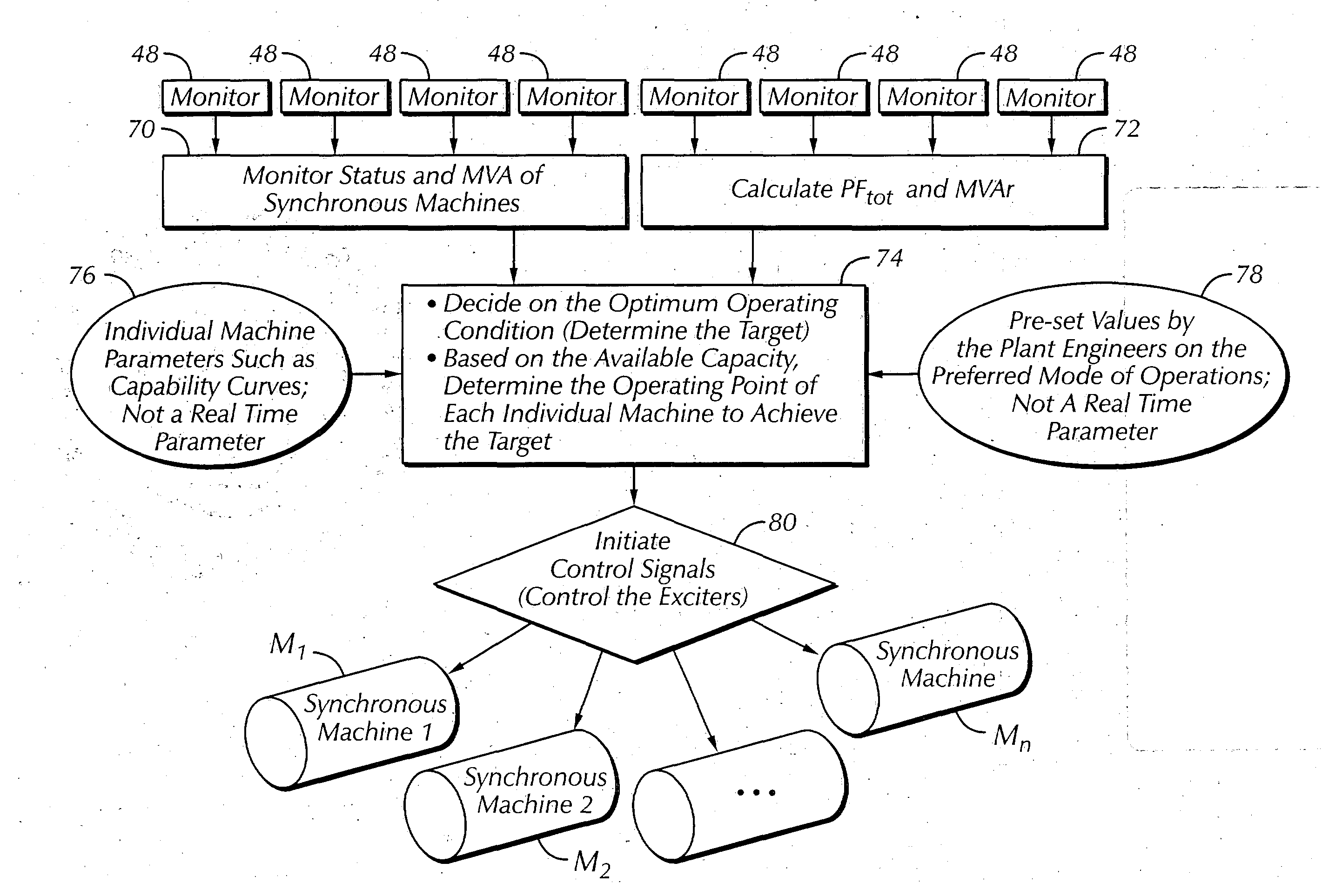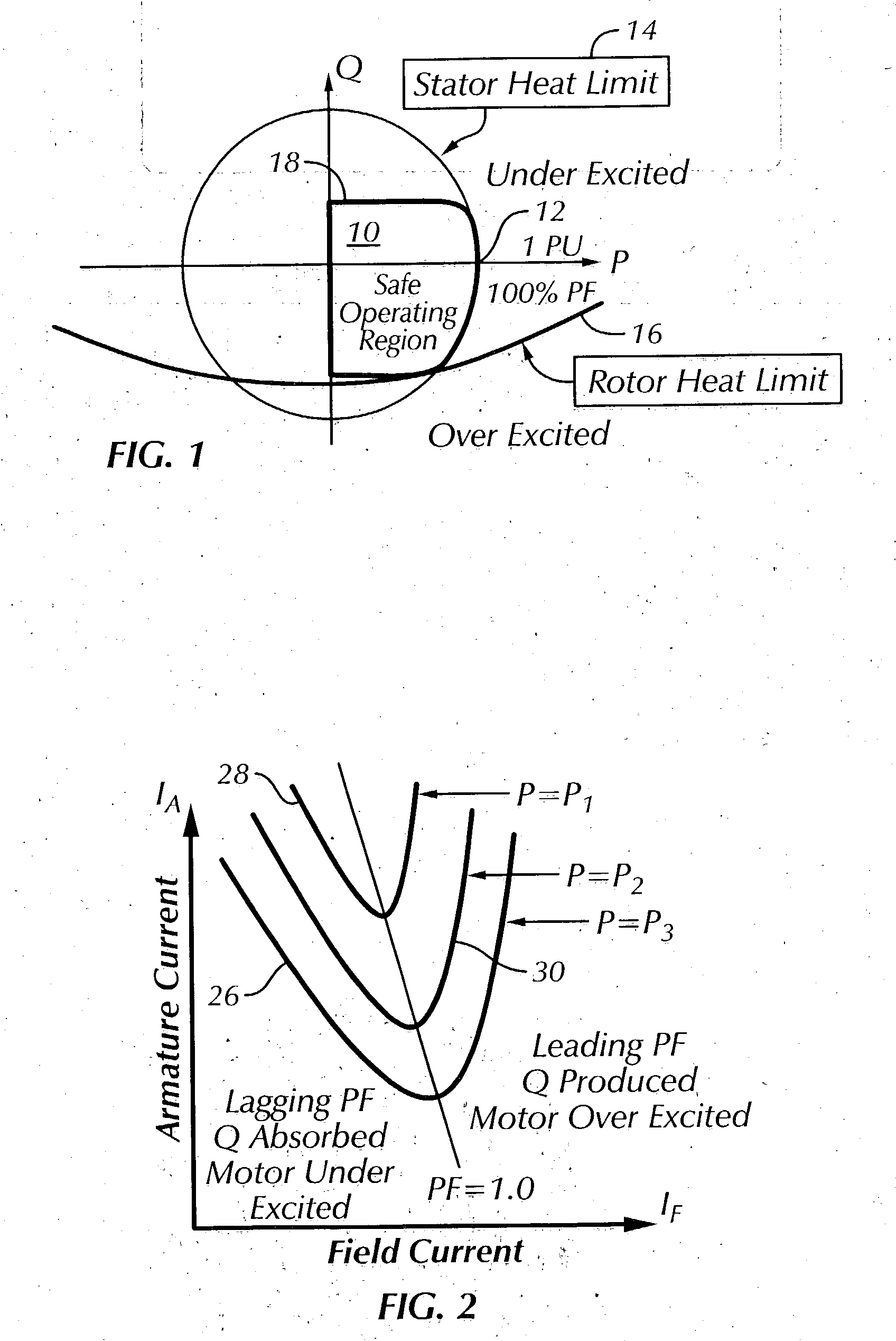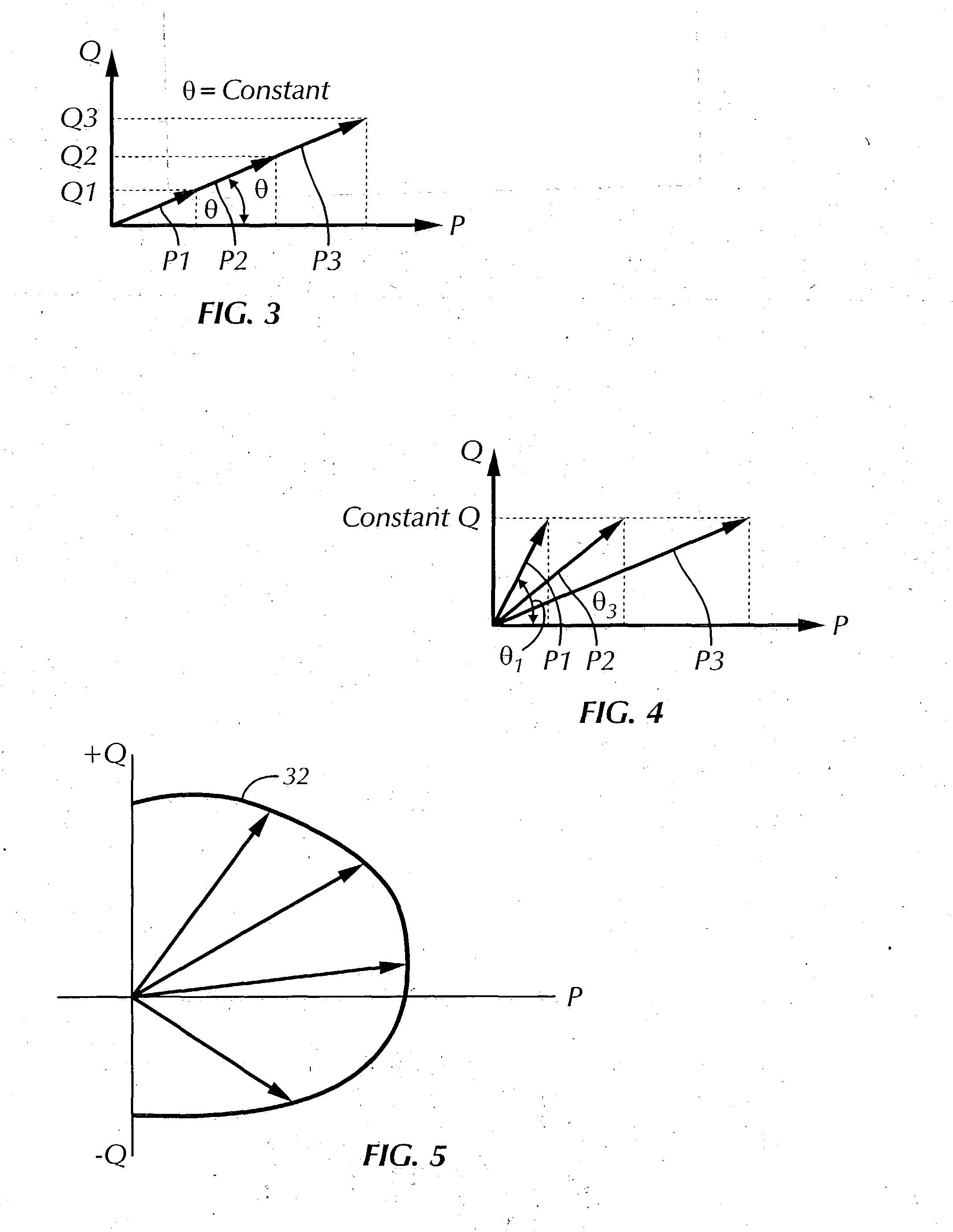Reactive power optimization with adaptive excitation control
a technology of excitation control and reactive power, applied in the direction of multiple ac dynamo-electric motor control, electric variable regulation, synchronous motor starters, etc., can solve the problems of large amount of electrical power, high cost of imported power, and inability to supervise or monitor the overall power system at the plant or facility. , to achieve the effect of power control, saving energy and saving energy in the facility
- Summary
- Abstract
- Description
- Claims
- Application Information
AI Technical Summary
Benefits of technology
Problems solved by technology
Method used
Image
Examples
example 2
Leading Power Factor at 50% Load
[0081] Loads in this example were similar to Example 1. The synchronous machines were momentarily over excited to support the bus voltage during the start of the induction motor. The following shows the system condition just before the start of the induction motor.
2 KVA kW kVAR PF Total 47.2 20 -42.8 (Gen) 0.4 Leading Incoming Power M.sub.1 24.3 9.6 -22.3 (Gen) 0.4 Leading Incoming Power M.sub.2 22.9 10.3 -20.5 (Gen) 0.4 Leading
[0082] The induction motor M.sub.x was then started. FIG. 15 shows line voltage (V.sub.bc and line current (I.sub.b) trending over time. In this case the voltage dropped to only 4% of the nominal voltage and the acceleration time was 300 msec.
example 3
Lagging Power Factor at 90% Load
[0083] In this example the system is highly loaded and / the power factor of the system was 83% lagging. The power quantities measured before starting the induction motor (Induction 1) are summarized in the following Table.
3 KVA kW kVAR PF Total 42.6 35.4 23.7 -0.83 Incoming Power M.sub.1 23.7 19.8 13.0 -0.83 Incoming Power M.sub.2 18.9 15.6 10.7 -0.83
[0084] The induction motor M.sub.x was then started. FIG. 16 shows line voltage (V.sub.bc) and line current (I.sub.b) trending over time. In this example the voltage dropped to 10% of the nominal voltage and the acceleration time is 358 msec.
example 4
High PF With Synchronous Motors Operating at Unity Power Factor and 90% Load
[0085] In this example the power factor of the system was -98% lagging. The power quantities measured before starting the induction motor are summarized in the following Table.
4 KVA kW Kvar PF Total 37.7 36.8 7.8 -0.98 Incoming Power M.sub.1 20.5 19.9 4.9 -0.97 Incoming Power M.sub.2 17.2 16.9 2.9 -0.98
[0086] The induction motor M.sub.x was then started. FIG. 21 shows line voltage (V.sub.bc) and line current (I.sub.b) trending over time. In this example the voltage dropped to 9% of the nominal voltage and the acceleration time was 350 msec.
PUM
 Login to View More
Login to View More Abstract
Description
Claims
Application Information
 Login to View More
Login to View More - R&D
- Intellectual Property
- Life Sciences
- Materials
- Tech Scout
- Unparalleled Data Quality
- Higher Quality Content
- 60% Fewer Hallucinations
Browse by: Latest US Patents, China's latest patents, Technical Efficacy Thesaurus, Application Domain, Technology Topic, Popular Technical Reports.
© 2025 PatSnap. All rights reserved.Legal|Privacy policy|Modern Slavery Act Transparency Statement|Sitemap|About US| Contact US: help@patsnap.com



